5 places that show that Lisbon is a modern city

Portugal is a country full of incredible stories. But it is not only in the past that they live in the Portuguese lands. Lisbon, one of the main Portuguese cities, combines historical places and modern architecture. With the past, present and future building a harmonious whole. Discover 5 places that demonstrate that the city that inspired poets and singers of fado is able to modernize and delight residents and visitors from all over the world.
1. Parque de las Naciones

El Parque de las Naciones (Nations' park) is the most nueva part of Lisbon. Its project was conceived from the EXPO 98 project and allowed the area to gain new infrastructure.
Located in the coastal region of the city, and within the limit with the municipality of Loures, the Parque de las Naciones was conceived based on contemporary concepts of urbanization and architecture, always with the objective of connecting with the environment.
Some of the projects that mark and translate this modern spirit of the region are:
1.1 Pabellón de Portugal
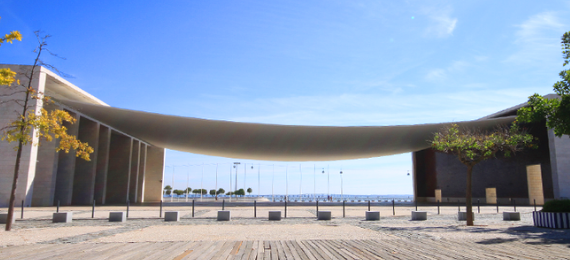
El Pabellón de Portugal (Portugal Pavilion) is a challenge for the view. The architectural project was conceived by the Portuguese architect Álvaro Siza Vieira and simulates the idea of a sheet of paper supported by the tiles. The daring project ganó, in 1998, the Valmor Architecture Prize¡
CONQUEST EL PASAPORTE PORTUGUESE!
Currently, el Pabellón de Portugal is managed by the University of Lisbon. The university project is that the space serves as a research center and hosts activities for the dissemination of science, architecture and the promotion of the Portuguese language.
1.2 Pabellón de la Utopía / Altice Arena
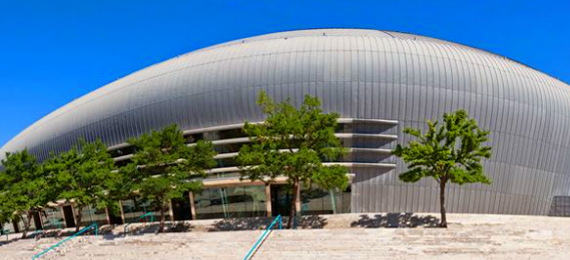
The project of the Portuguese architect Regino Cruz is another building created as part of the EXPO 98 project. Since its inauguration, it has had several names: Pavilhão da Utopia, Pavilhão Atlântico, MEO Arena and currently called Altice Arena.
The inspiration for the theme of the Universal Exhibition of 1998: “The oceans, a heritage for the future”, is evident in the interior of the building that recalls the old boats of the great ships.
El Pabellón de la Utopia (Utopia Pavilion) is a multipurpose space that hosts concerts, congresses and sporting events. Its architectural project received several awards. The last was the “Award for the most innovative structure”, in 2001.
1.3 Cable car in Parque de las Naciones
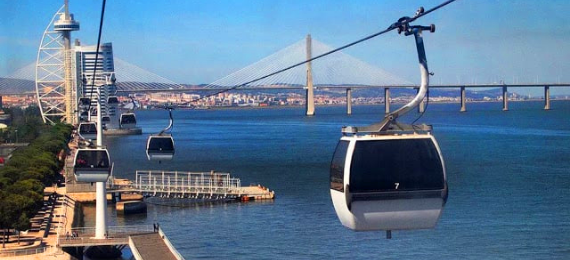
As part of the EXPO 98 project, the cable car has 40 cabins covering 1230 meters across the River Tagus. Each cabin has capacity for the floor occupants and the crystal structure allows an impressive view across the entire journey that takes between 8 and 12 minutes. From the top you can see the Pabellón de Portugal, the Altice Arena, the ancient Vasco da Gama Tower and even the Gare do Oriente.
1.4 East Station
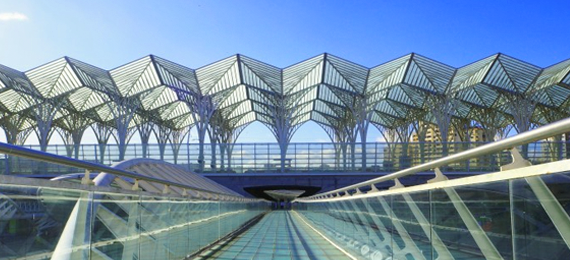
La Estación Oriente (Orient Station) is an integral part of the railway system and railroads in Portugal, and is also an important point of public transport in Lisbon.
One of the most outstanding aspects of Gare do Oriente is its beautiful glass and steel roof that looks out over a forest. Its project was prepared by the Valencian architect Santiago Calatrava, winner of the competition launched in 1994 by the Portuguese government.
1.5 Lisbon Oceanarium

The last point of the Parque de las Naciones that deserves to be highlighted in this text is the Oceanario de Lisboa. Also as part of EXPO 98, in 2015 and 2017, the space won the Traveler's Choice award, from TripAdvisor, the Mejor Oceanario del Mundo.
CONQUEST EL PASAPORTE PORTUGUESE!
The main attraction of the oceanarium is its central water tank where different species coexist.
Today, the Oceanario de Lisboa houses around 25,000 animals, including birds, birds and mammals, and several awards have been received.
2. Puente Vasco da Gama
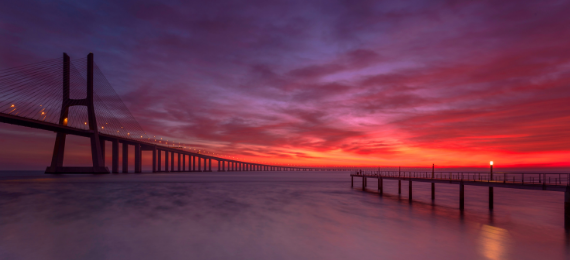
By 2018, the Puente Vasco da Gama (Vasco da Gama Bridge) was listed in the Guinness book as the biggest bridge in Europe, with a total length of 17,185 km. The construction that unites Lisbon and Sacavém with Montijo lost its position in front of the bridge of Crimea in Russia, but it continues to be the biggest of the European Union.
The end of the construction was celebrated with a feijoada that also entered the Guinness book. The 5050 meter wide table prepared to serve feijoada received the title of the biggest table in the world. About 15,000 people attended the event.
The Vasco da Gama bridge is a robust construction designed to withstand 250 km/h explosions with an earthquake 4.5 times more than the one that swept Lisbon in 1755.
3. Jardín Gulbenkian
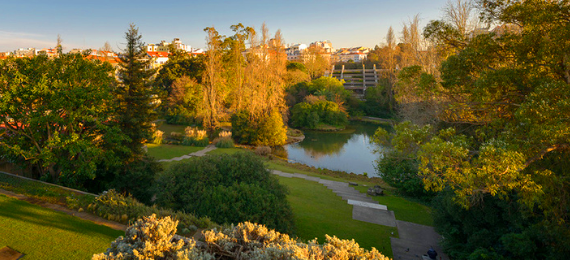
The gardens of the Gulbenkian Foundation is a green block in the center of Lisbon. The space, which surrounds the Calouste Gulbenkian Foundation, was built in the 1960s and is considered “one of the most emblematic gardens of modern movement in Portugal”.
CONQUEST EL PASAPORTE PORTUGUESE!
In addition to serving as a setting for various educational and cultural activities of the Foundation, the garden is also a space frequented by many who are looking for a place to relax and get in touch with nature.
4. Champalimaud Foundation
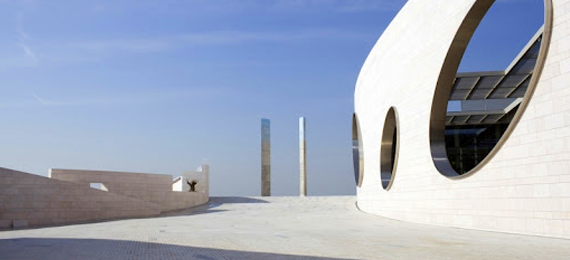
The Champalimaud Center is located on the river Tajo and the sea, in the area of Belém and is considered an important center for research in biomedicine.
The work has a contemporary architecture that combines aesthetics and functionality distributed over three large areas that together add up to 60,000 m2 of area. You can find out more about its architecture through the documentary “Into the Unknow”.
5. MAAT
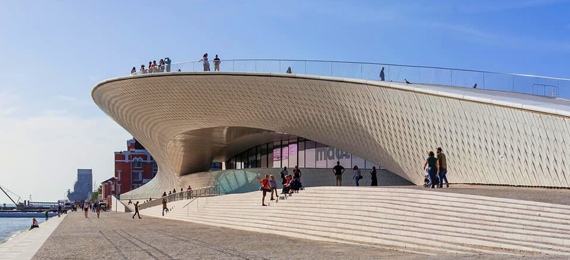
The Museum of Art, Architecture and Technology (MAAT) was inaugurated in 2016 and has become a reference in the riverside of Belém. According to the person responsible for the design of MAAT, architect Amanda Levete, the objective was to design a building that would integrate with the landscape.
Organic lines, a high point of the building and its cubicle. It integrates with the common areas surrounding the museum and can be used as a viewpoint of the Tajo, including an amphitheater, thanks to its design and steps.
CONQUEST EL PASAPORTE PORTUGUESE!
In this text we present some of the many points that make Lisbon a city that celebrates the past and looks to the future. As its main city, Portugal has also grown, modernized and increasingly converted into a center of scientific and technological development in Europe.

Proposed amendment to the Nationality Law will be reviewed by the Constitutional Court: what does this mean for the Portuguese-descendant community?
The recent approval of amendments to the Nationality Law by the Portuguese Parliament has opened a new phase in the legal debate. The […]

Monitoring of Nationality Processes in Portugal – November 2025
In November 2025, Martins Castro continues to closely monitor the Portuguese nationality processes, which continue to face deadlines […]

Transmission of nationality to children and spouses: what needs to change and why acting now is crucial.
The amendments to the Portuguese Nationality Law approved by Parliament are not yet in effect. The text is awaiting review by […]